All Hallows' Convent Chapel
Ann Street, Brisbane
B.B. Whitehouse & Co., Brisbane, 1911, for Holy Trinity Anglican Church, Mackay
Restored & installed in present location with additions
c.1921 B.B. Whitehouse & Co., Brisbane
Restored 2011 W.J. Simon Pierce, Brisbane
2 manuals, 10 speaking stops, mechanical action
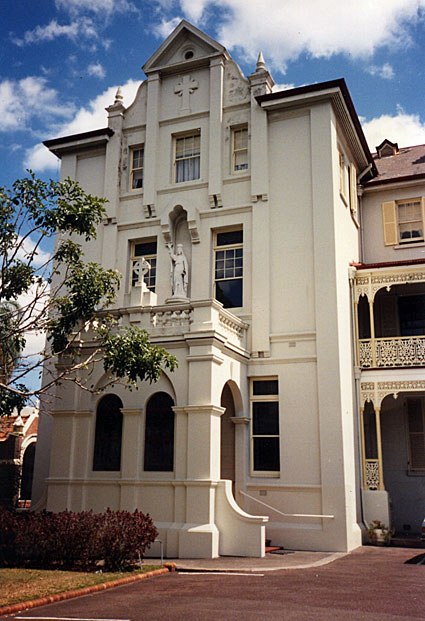
[Photograph by Howard Baker (September 1989)]
Historical and Technical Documentation by Geoffrey Cox
© OHTA 1989, 2011, 2014 (last updated October 2014)
All Hallows' Convent and School was established in 1863 on the present site above Petrie Bite of the Brisbane River as the first permanent home of the Sisters of Mercy in Queensland. The convent building is based around 'Adderton', a house built in the late 1850s for Dr George Fullerton. Most of the present complex was added in 1891-92, to the design of local architects, Hunter and Corrie. The original chapel (situated in the south-western wing) was almost tripled in size in 1921 when the present nave and transept were added, using a classical design by local architects, Hall and Prentice. The chapel was refurbished in 1968 in line with changes associated with the Second Vatican Council.1
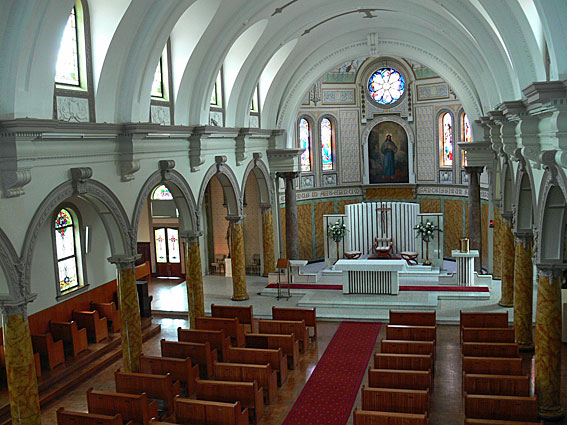
The convent chapel following refurbishment of the late 1960s
[Photograph by John Maidment (March 2011)]
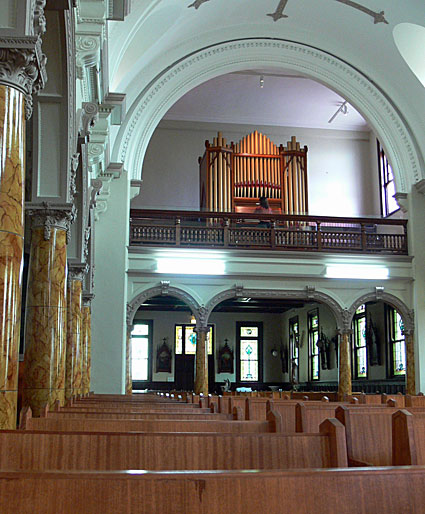
The B.B. Whitehouse & Co. organ of 1911
[Photograph by John Maidment (March 2011)]
The organ is located in a gallery within the rear (earlier) section of the chapel, which opens onto the nave extension through a large archway. It appears to have been installed here around the time the chapel was enlarged in 1921,2 having been built originally by B.B. Whitehouse & Co. for Holy Trinity Anglican Church, Mackay, North Queensland,3 where is was opened on 8 October 1911:
A new pipe organ, costing £435, has been installed in Holy Trinity Church, Mackay, by Messrs. Whitehouse and Co. The instrument was opened free of debt. Mr. L. Weston, organist of the Townsville Cathedral, played the opening services on October 8, and gave an organ recital on the following evening. The choir of 35 adult and 12 boys' voices rendered the sacred cantata "Esther" on the following Wednesday in an almost faultless manner, the organ accompaniment being played by Mr. Weston. The offerings for the week were over £40. During the three and a half years that the Rev. Francis de M. Tubman, M.A., B.Sc., has been rector of the church, about £1100 has been raised by free giving for special purposes, besides fully maintaining the upkeep of the parish church.4
The organ was dedicated at Mackay in memory of Mr Charles Webster, 'for 25 years a Parish Councillor and Church Warden.' The church was the second on the site, a wooden building in Gothic style built in 1879 to the design of the colonial architect, F.D.G. Stanley. Unfortunately the building was destroyed in the disastrous Mackay cyclone of January 1918.5

Second Holy Trinity Church, Mackay
[Photograph: John Oxley Library,
State Library of Queensland, Neg: 41979]
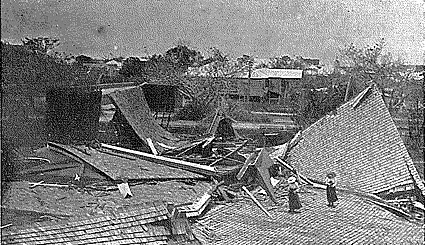
Holy Trinity Church after the 1918 Cyclone
[Photograph from Centenary booklet
of Holy Trinity Church, Mackay, 1867-1967.]
Having suffered very considerable damage, the organ was removed from Mackay to the premises of the original makers, B.B. Whitehouse & Co., George Street, Brisbane. Following restoration, it was installed in the present location with the addition of the Vox Humana 8ft stop.6 It appears that the Pedal Bass Flute 8ft stop and Swell Octave coupler were also added at this time, as these three stop knobs are lettered and shaped slightly differently from the others.7
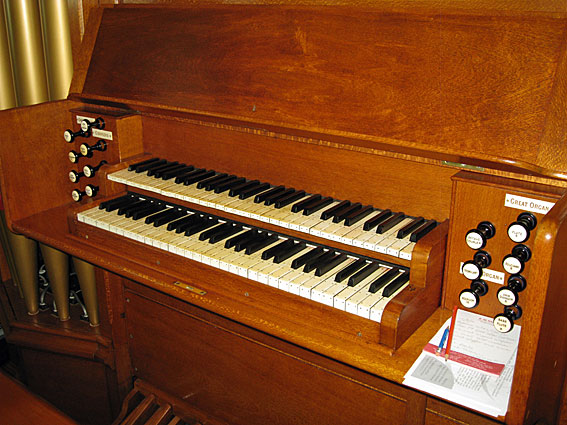
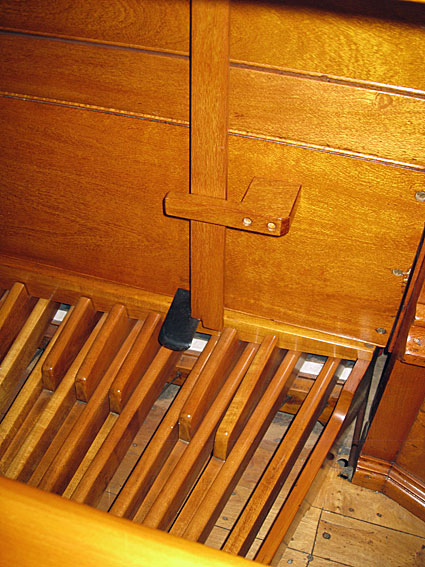
Console of the organ, showing tropic-pinned ivories and trigger swell lever
[Photographs by Geoffrey Cox (September 2014)]
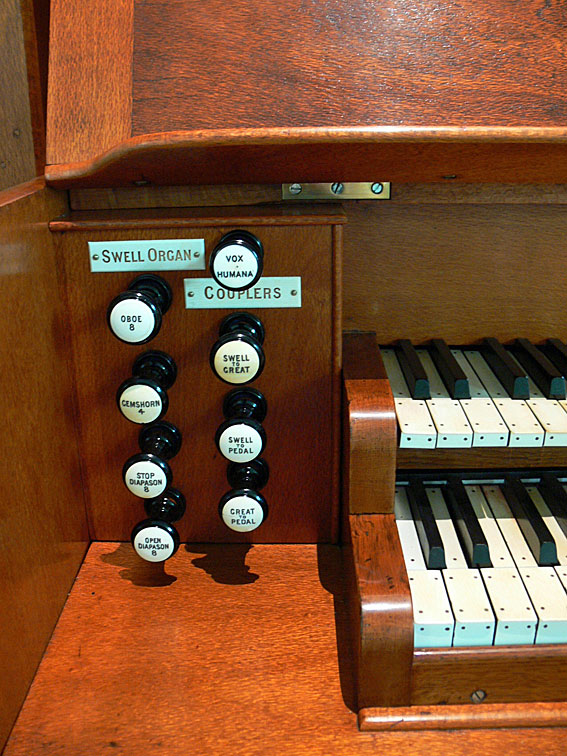
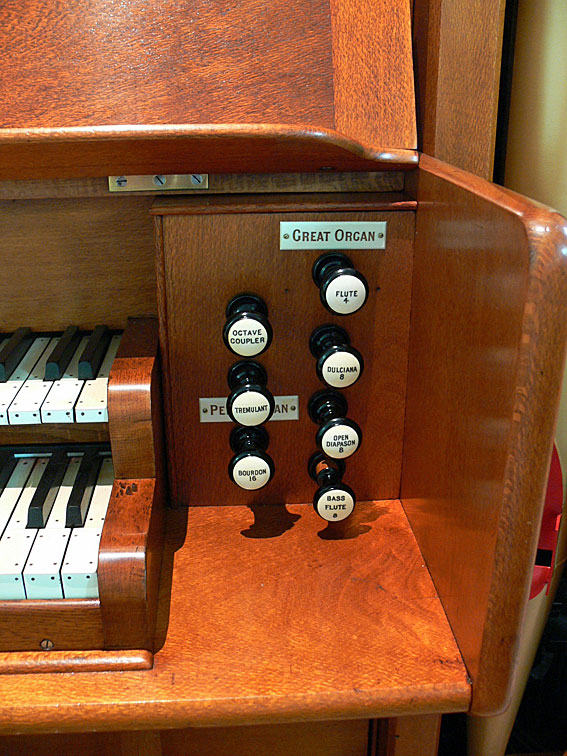
Stop jambs, showing different lettering on the stops added c.1921
[Photographs by John Maidment (March 2011)]
The façade pipes comprise one very simple flat and two towers with angled braces. This organ appears to have been one of three two-manual instruments of similar appearance and size built by the firm around the same time.8 The other two, at the South Brisbane Congregational Church (1910) and at Holy Trinity Anglican Church, Woolloongabba (1912), have been destroyed by fire. This instrument (and probably also the other two) shares with the firm's considerably earlier organ for Wesley Uniting (formerly Methodist) Church, Kangaroo Point (1903), the characteristic of a common soundboard for the Great and Swell.
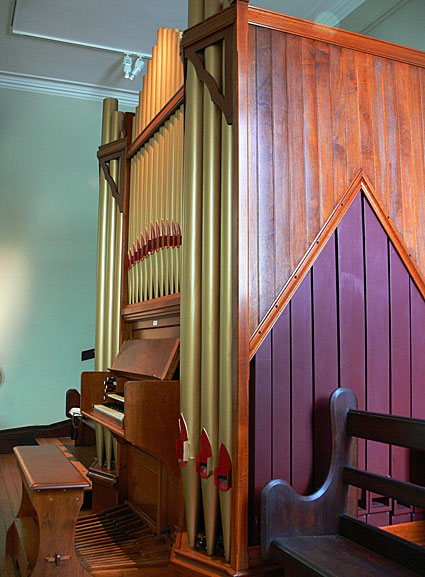
The organ case,
showing Pedal Bourdon 16ft pipes at the side
[Photograph by John Maidment (March 2011)]
The soundboard, action, console and casework were made in Queensland, while the console fittings were imported from Thomas Harrison of London, and the pipework from A. Palmer & Son of London. The ivories on the keys are tropic-pinned to guard against the ravages of the climate - a feature that may be observed also on the B.B. Whitehouse & Co. organ at St Mary's Catholic Church, Maryborough (1912).
The organ was comprehensively restored in 2011 by W.J. Simon Pierce of Brisbane.9

The builder's nameplate on the organ
[Photograph by John Maidment (March 2011)]
| GREAT Open Diapason Dulciana Flute SWELL Open Diapason Stop Diapason Gemshorn Oboe Vox Humana PEDAL Bourdon Bass Flute COUPLERS Swell to Great Great to Pedal Swell to Pedal [Swell] Octave Coupler |
8 8 4 8 8 4 8 [8] 16 8 |
[stpd bass] [metal] [c.1921] A A [c.1921] [c.1921] |
Drawstop console; tropic-pinned ivories
[Swell] tremulant
Compass: 58/30
Trigger swell lever
Mechanical action (manuals); pneumatic action (pedals and façade pipes).10
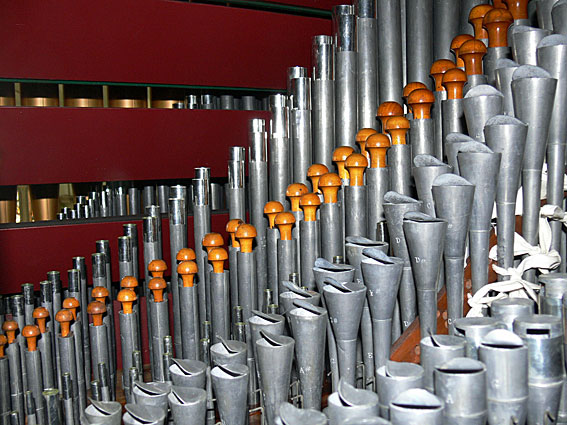
Swell pipework, including the metal Stop Diapason 8ft
[Photograph by John Maidment (March 2011)]
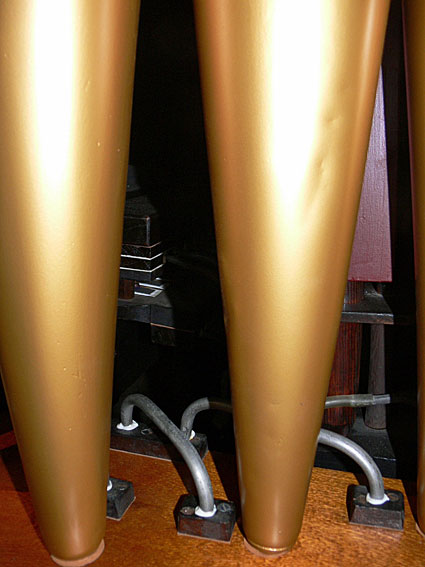
Pneumatic action to the façade pipes
[Photograph by John Maidment (March 2011)
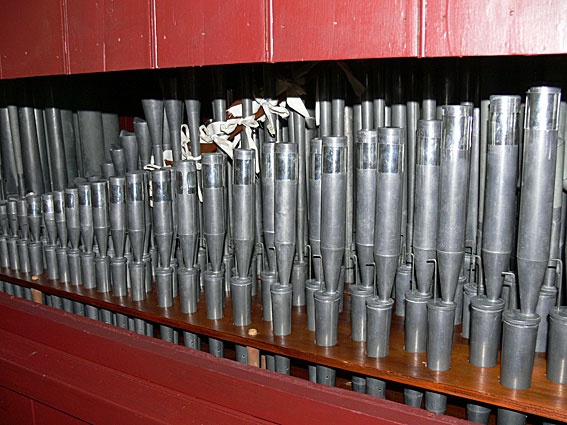
Swell Vox Humana 8ft, added c.1921 at the back of the swell box
[Photograph by John Maidment (March 2011)]
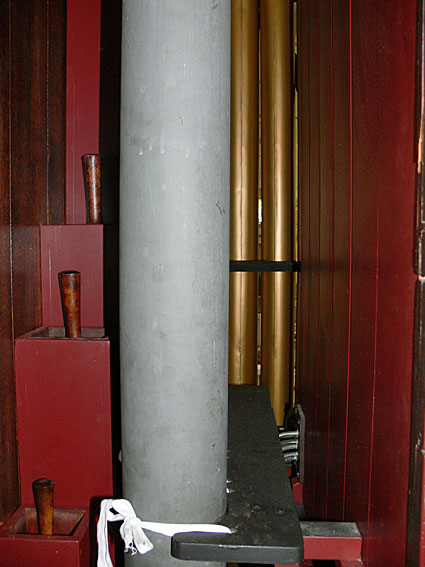
Pedal Bourdon 16ft
and Bass of the Swell Open Diapason 8ft, outside the swell box
[Photograph by John Maidment (March 2011)]
_________________________________________________________________________
1 Queensland Heritage Council, Queensland Heritage Register, location 600200; Donald Watson & Judith McKay, Queensland Architects of the 19th Century: A Biographical Dictionary (Brisbane: Queensland Museum, 1994), pp. 102-03.
2 Sr. M. Celine, in a personal communication to G. Cox (1974) suggested that the organ was installed around 1919. The date when the chapel was enlarged, 1921, appears most likely.
3 Personal communication to G. Cox from Arthur Langham and Joe H.Whitehouse, jnr, 1974.
4 The Brisbane Courier (21 October 1911), p. 16.
5 John Henry Williams, Anglican Parish of Holy Trinity, Mackay: Centenary 1867-1967 (Mackay, 1968), p. 11, 16-17.
6 Personal communication to G. Cox from Joe H.Whitehouse, jnr, 1974.
7 These additions have been confirmed by inspection of the action by Simon Pierce.
8 The Brisbane Courier (17 December 1910), pp. 12, 13; The Brisbane Courier (20 December 1910), p. 6; The Brisbane Courier (17 February 1912), p. 6; The Brisbane Courier (24 February 1912), p. 13
9 Personal communication to G. Cox from Simon Pierce, January 2011.
10 Specification noted by G. Cox, August 1974.